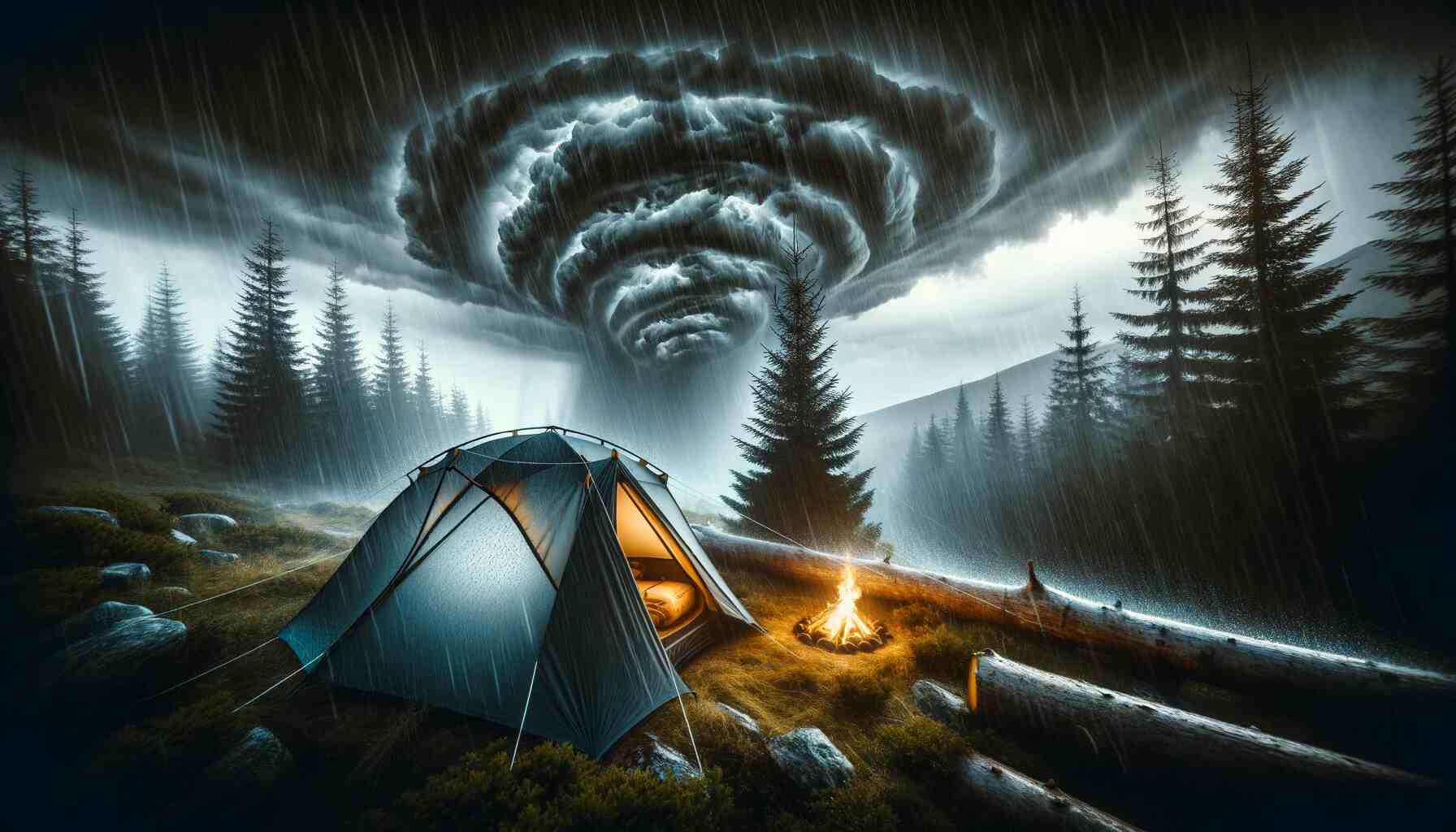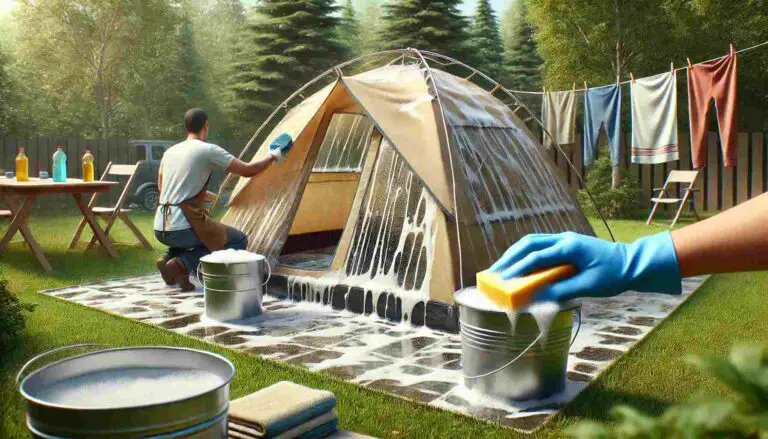When planning a camping trip, one crucial consideration is how well your tent can withstand rain. The last thing you want is to wake up in the middle of the night with water dripping onto you. Understanding the capabilities of your tent in wet conditions can make or break your camping experience.
Tent Design
The design of your tent plays a significant role in its ability to withstand rain. Different tent styles offer varying levels of protection against moisture:
- Dome Tents: Dome tents typically have a rounded shape that allows rain to roll off easily. Their sloped walls and rainfly help prevent water from pooling on the roof.
- Tunnel Tents: Tunnel tents are designed to withstand wind, but they may not be as effective in heavy rain. Their flat roofs can collect water if not properly pitched.
- Geodesic Tents: Geodesic tents feature interconnected poles that create a strong, stable structure. Their design can handle rain and wind well, making them suitable for harsh weather conditions.
- A-frame Tents: A-frame tents have a classic triangular shape, which may not be as efficient in shedding rain compared to dome or geodesic tents.
Consider the terrain and weather conditions of your camping destination when choosing a tent design. For rainy environments, opt for tents with steeply sloped roofs and a rainfly that extends beyond the tent walls.
Materials
The materials used in tent construction play a crucial role in determining its waterproofing capabilities. Here are some key components to consider:
- Rainfly: The rainfly is an outer waterproof layer that covers the tent body. It acts as a barrier against rain and prevents moisture from seeping through the tent fabric. Look for tents with durable, ripstop nylon rainflies treated with a waterproof coating such as polyurethane (PU) or silicone.
- Tent Fabric: The fabric used for the tent body should also be waterproof and breathable. Common materials include polyester and nylon, which are often treated with a waterproof coating. Ripstop fabrics are reinforced with a grid pattern to prevent tears and punctures.
- Seams and Zippers: Pay attention to the seams and zippers of the tent, as these are potential weak points where water can penetrate. Look for tents with sealed seams and water-resistant zippers to minimize leakage.
- Flooring: The tent floor should be made of a durable, waterproof material to keep you dry even on wet ground. Many tents feature bathtub-style floors that rise several inches up the tent walls to prevent water from seeping in.
Waterproofing
Even the most waterproof tent requires proper maintenance to remain effective. Here are some tips for waterproofing your tent:
- Seam Sealing: Before your camping trip, inspect the seams of your tent and apply seam sealer if necessary. Seam sealer is a waterproof adhesive that fills in any gaps or holes along the seams to prevent leaks.
- Tent Maintenance: Keep your tent clean and free of dirt and debris, as these can compromise its waterproofing abilities. Avoid storing your tent when it’s wet, as this can promote mold and mildew growth.
- Reapply Waterproof Coating: Over time, the waterproof coating on your tent may wear off. Reapply a waterproof spray or coating to rejuvenate the fabric’s water repellency.
- Proper Pitching: Ensure your tent is properly pitched with taut guy lines and stakes to maximize its ability to shed rainwater.
Rainfall Intensity
The amount of rain a tent can withstand also depends on the intensity and duration of the rainfall. Most tents are designed to handle light to moderate rain showers without any issues. However, prolonged exposure to heavy rain or severe weather conditions may test the limits of your tent’s waterproofing abilities.
When camping in areas prone to heavy rain or storms, it’s essential to choose a tent with robust construction and reliable waterproofing features. Additionally, consider bringing a tarp or groundsheet to place under your tent for added protection against groundwater and moisture.
Top Waterproof Tents for Your Camping Adventure
Here are some recommendations for tents that excel in waterproofing and are suitable for different camping needs.
1. REI Co-op Half Dome 2 Plus Tent
This dome-style tent offers ample space for two campers and features a durable polyester rainfly with a waterproof PU coating. Its bathtub-style floor and sealed seams provide excellent protection against rain. Plus, its easy setup and reliable performance make it a favorite among backpackers and car campers alike.
2. Big Agnes Copper Spur HV UL2 Tent
For ultralight backpacking adventures, the Copper Spur HV UL2 is hard to beat. Despite its lightweight design, this tent boasts a silicone-treated nylon rainfly and taped seams to keep you dry in wet conditions. Its freestanding structure and spacious interior make it ideal for solo or duo backpacking trips.
3. MSR Hubba Hubba NX 2-Person Backpacking Tent
The Hubba Hubba NX is a versatile tent that strikes a balance between weight, durability, and weather protection. Its ripstop nylon rainfly and Xtreme Shield waterproof coating ensure reliable performance in rainy conditions. With its easy setup and livable interior space, it’s a popular choice for backpackers seeking a dependable shelter.
4. Eureka! Copper Canyon LX 6-Person Tent
Families and car campers will appreciate the spaciousness and weather resistance of the Copper Canyon LX. This cabin-style tent features a full-coverage rainfly and factory-sealed seams to keep rain out. Its vertical walls and high ceiling provide plenty of room to stand and move around, making it a comfortable option for extended camping trips.
5. Coleman WeatherMaster 10-Person Outdoor Tent
If you’re camping with a large group or want extra space for gear storage, the WeatherMaster is an excellent choice. This cabin-style tent features Coleman’s WeatherTec system, including inverted seams and a patented welded floor, to ensure dryness even during heavy rain. Its room divider and screened porch add versatility and comfort to your camping experience.
When purchasing a tent, consider factors such as the number of occupants, desired features, and budget constraints.
Testing Your Tent
Before embarking on your camping trip, it’s a good idea to test your tent’s waterproofing capabilities. Set up your tent in your backyard or a local park and simulate rainy conditions using a garden hose or sprinkler. Check for any leaks or areas where water may be seeping in and address them accordingly.
Conclusion
In conclusion, the amount of rain a tent can withstand depends on various factors, including its design, materials, waterproofing features, and the intensity of the rainfall. By choosing a tent with durable construction, proper waterproofing, and regular maintenance, you can ensure a dry and comfortable camping experience even in wet weather conditions.
Remember to pitch your tent correctly, inspect it for any signs of wear and tear, and test its waterproofing before heading out into the great outdoors. With the right preparation, you can enjoy camping adventures regardless of the forecast.







